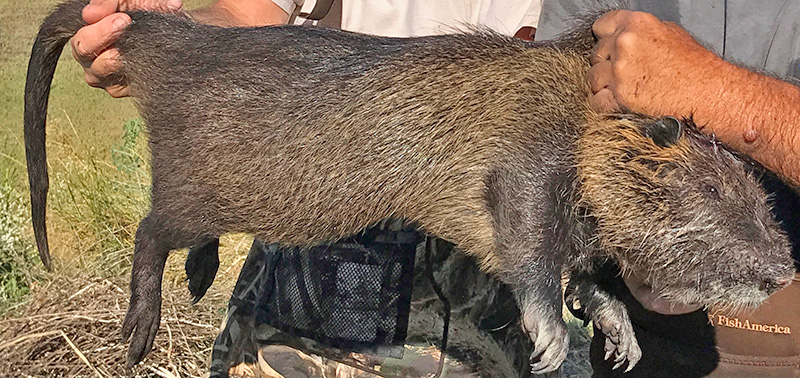
Large, male nutria trapped in a private wetland in Merced County, June 2017. CDFA photo
Nutria are an invasive species of rodent that cause massive damage to crops, levees, and the Delta
Nutria are moving beyond the original infestation area; Last year, 78% of the nutria found were in newly infested areas including the northwestern Sacramento-San Joaquin Delta and throughout the San Joaquin River corridor in Fresno County
This bipartisan bill extends funding that Rep. Harder secured in 2020 to eliminate these invasive swamp rats in California
July 21, 2024 - WASHINGTON – Representative Josh Harder (CA-9) and a bipartisan group of his colleagues have introduced legislation to continue funding nutria eradication efforts in California and across the country. Nutria are a semi-aquatic invasive species of rodent from South America – these giant swamp rats have large “nacho cheese” teeth that they use to chew through vegetation and water management systems, wreaking havoc on their non-native environment and causing millions of dollars in damage.
Rep. Harder introduced this bill alongside Rep. Garret Graves (LA-6) and they were joined by Reps. John Garamendi (CA-8), David Valadao (CA-22), and Jimmy Panetta (CA-19). Affectionately nicknamed “swamp rats”, nutria can weigh upwards of 40 pounds, eat 25% of their body weight in vegetation every day, and one female nutria can reproduce 200 offspring in a year. Rep. Harder’s bill to expand the Nutria Eradication and Control Act to include California was signed into law in 2020.
“Nutria might look cute to some, but these giant swamp rats cause real damage,” said Rep. Harder. “When these invasive pests were first spotted in our waterways, I knew we had to act quickly. I’m proud of the progress we’ve made to shrink local nutria populations and I’ll keep working until every last one of these nacho-cheese-toothed rodents are out of San Joaquin County waterways.”
There has been significant progress made in eradicating nutria from the region, but between the end of 2022 and early 2024, nutria have been detected in new locations outside of the original infestation area. The newly infested areas include the northwestern Sacramento-San Joaquin Delta (Suisun Marsh, Sherman Island) and throughout the San Joaquin River corridor in Fresno County.
Last year, 678 nutria were taken in California, including 528 (78%) from new areas of infestation. Overall, this was an increase from the 580 nutria that were taken in 2022. Because of the spreading infestation, nutria eradication efforts have expanded to a significantly larger geographic area. Funding for nutria eradication efforts is essential as Nutria Eradication Program (NEP) teams keep working to remove nutria as they pop up in new areas.
Nutria are known to damage farmland, increase the risk of flooding, and endanger local ecosystems. If unmanaged, the nutria population could grow to 250,000 in California within 5 years.
Below is a chart with the total number of nutria taken in California from March 2017 through May 15, 2024.
|
Year |
Total (unique) cells with nutria taken |
Total # nutria taken |
Average # of nutria taken per cell |
|
2017 (March – December) |
7 |
20 |
2.9 |
|
2018 |
57 |
348 |
6.1 |
|
2019 |
73 |
492 |
6.7 |
|
2020 |
157 |
1239 |
7.9 |
|
2021 |
145 |
703 |
4.9 |
|
2022 |
112 |
580 |
5.2 |
|
2023 |
120 |
678 |
5.7 |
|
2024 (January – May 15) |
64 |
277 |
4.3 |
|
Total Across Years |
525 |
4335 |
Source: Congressman Josh Harder
Related: President Donald J. Trump Signs into Law the Nutria Eradication and Control Act by Congressman Josh Harder to Stop Giant Rodent Invasion in California’s Central Valley








